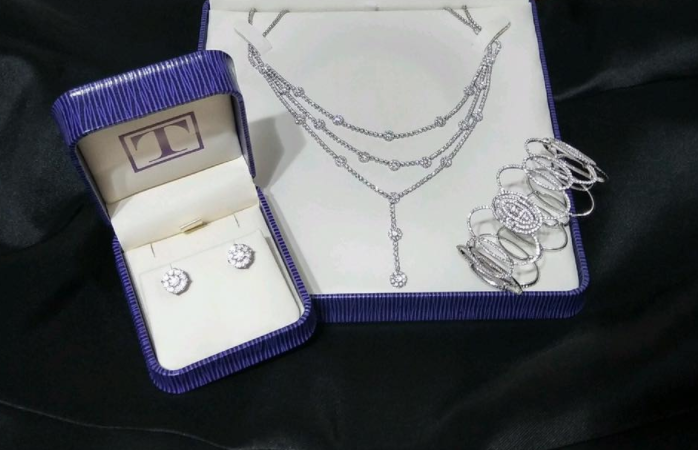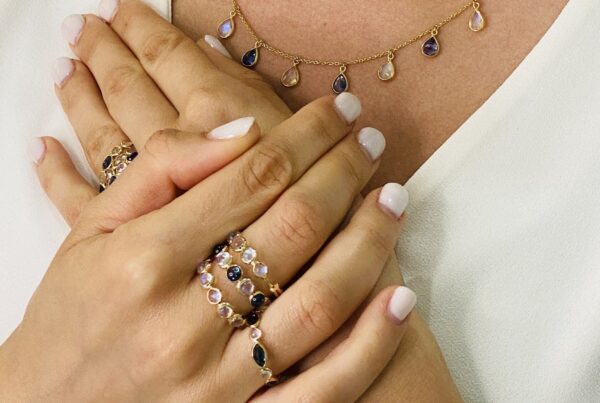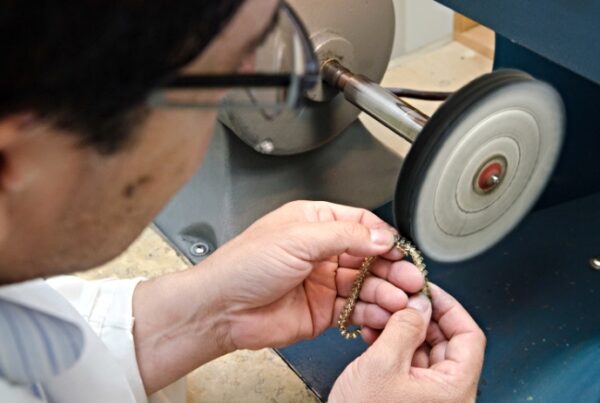Jewelry Insurance – Are You Covered?
The loss of a cherished jewel can be an deeply emotional experience. Finding out that you don’t have the right insurance coverage after-the-fact will make a bad situation feel even worse. Although we hope that you never suffer a loss, it pays to be prepared. Here is everything you need to know to make sure your valuable jewels and watches are properly insured.
Jewelry Insurance Options
Whatever insurance company you choose, make sure it has a good reputation and an excellent credit rating. Check company reviews and comments on social media. Pay attention to how the company addresses problems or complaints by its customers. The two ways you can insure your jewelry are either through your homeowner/rental insurance or through a separate jewelry policy.
Homeowner Insurance
Basic homeowner or renter policies have limited coverage on jewelry and watches. Typical policies do not include coverage for damage, loss, or partial loss (such as losing a gemstone, chipped gems, or broken pieces.) Reimbursement for loss by theft is subject to a dollar limit, usually around $1500. To make sure you have better coverage for your valuable jewelry, you can add an extension to your primary policy, known as a rider or endorsement. You will pay an additional premium for this enhanced coverage. Make sure to carefully check the terms of your rider policy so you know what is covered and what is not.
Please note! Submitting a claim on your homeowner policy, even with a jewelry rider, can result in increased rates for your insurance at renewal time. Typically, filing a single home insurance claim will raise your premium by an average of 9%. Two claims can raise your premium by as much as 20%! The size (amount) of the claim does not matter. Increases are based on the number of claims made. Carefully consider whether making an insurance claim is worth the cost of increased premiums.
Jewelry Insurance Specialists
To make sure you have adequate coverage for items of high value and to keep any claims separate from your homeowner insurance, you can opt for a stand-alone policy by a company that specializes in jewelry insurance. Well-known insurers include Jewelers Mutual Insurance, Lavalier, and JIBNA (Jewelry Insurance Brokerage of North America). A Google search for “jewelry insurance providers” will provide a more comprehensive list of insurers.
The Cost of Jewelry Insurance
The cost of your jewelry insurance will vary based on the appraised value of your item, where you live, local theft rates, whether your policy has a deductible, and whether the policy reimburses actual cash value (the original cost minus depreciation) or its replacement value (the full cost to replace the item at today’s prices.) Your insurance rate will also depend on the types of claims that are covered: loss, partial loss, damage, or theft. If you live in an area that has a high rate of theft, you can often bring down the price of your insurance by having a home alarm, storing your jewelry in a bank safety deposit box, or installing a home safe.
Unlike homeowner policies, a stand-alone jewelry policy will not have a deductible. Jewelry insurance premiums in 2019 average from $1 to $2 for every $100 of value per item. For example, insurance premiums for a ring worth $10,000 will cost approximately $100 – $200 a year.
Jewelry Insurance Policy Questions
Before taking out a policy, ask the following questions:
-
Will you be covered for loss, partial loss, theft, and damage?
-
How do you make a claim? What documentation will you need?
-
Are there any circumstances where you will not be insured? What about travel outside the country?
-
What types of repairs are covered? Are you able to choose where to have these repairs made?
-
Can you choose where to buy your replacement item? Are you limited to buying from jewelers on your insurance company’s approved list?
-
What happens if you cannot find a ready-made replacement item? What if you have an antique or custom design? If your policy if for a replacement for “Like Item” or if a piece needs to be remade, can you choose the jeweler you use or are you restricted to jewelers associated with the insurance provider?
-
Does your policy adjust for inflation?
-
How often do you need to provide updated appraisals?
-
Make sure you know whether you are insured for current replacement value or actual cash value. ACV is the original cost minus depreciation. Current replacement value is what is costs to replace the item at today’s market price.
Jewelry Appraisals
While an invoice or a sales receipt may be sufficient for items less than $1000, most insurance companies will require appraisals for items of higher value.
Your appraisal will include detailed information about all the characteristics of the piece including: weights, visible measurements, gemstone quality, special gem treatments that are not typical for the type of gemstones, a statement if the gems are untreated, whether gems are natural or synthetic, the manufacturer, quality of workmanship, types of metal and karat fineness, trademarks, model/serial number/year of manufacture (if applicable), and any special identifying features such as engraving or maker’s marks. You will also receive photographs of the piece from different angles.
The appraisal will use the phrase “estimated replacement value.” This is the assessed value of an item based on current market prices. Be aware that claims by discount retailers of an item’s “real worth” may not be the same as the actual appraised value. In addition to the cost to replace or repair an item, the value stated in an insurance appraisal should include enough to pay the appraiser for their services. The appraiser must also remember to add taxes, which can either be listed separately from, or included in, the value on the appraisal.
FYI – An appraisal is NOT the same thing as a gem grading report (aka certificate.) Grading reports are conducted by an highly reputable independent laboratories such as the Gemological Institute of America (GIA) or the American Gemological Society (AGS.) Using exacting scientific instruments, each report is a unique, numbered document that includes an exact map of a gemstone’s specific inclusions, its measurements, and a complete description of its qualities (color, cut, clarity, enhancements, carat weight, and any other identifying features).
An appraisal is performed by a trained professional operating in an individual and subjective capacity. The accuracy of an appraisal is dependent on the training, skills, and tools of the individual analyzing the item.
Ideally, valuable gems should have both an appraisal and a grading report. Without a grading report, there is no way to definitively assign a stone’s replacement value or to prove ownership if it has been recovered from loss or theft. For gems without a grading report that are already in a setting, it is extremely important to use a well-qualified appraiser whose report will be not be challenged.
Finding An Appraiser
A professional jewelry appraiser should have at minimum a Graduate Gemologist diploma from an accredited gemology school such as the Gemological Institute of America (GIA) or the International School of Gemology (ISG). The appraiser should also have credentials from respected national appraisal organizations such as the American Gem Society, the National Association of Jewelry Appraisers, or the American Society of Appraisers.
Ask your friends for referrals to jewelers they trust. Your insurance agent may also have recommendations. Using someone who is on your insurer’s approved appraiser list can make it easier to get claims settled quickly and for the appraised value. Search online for someone in your area who has the right qualifications. Regardless of the source of referral, thoroughly research any jeweler that you are considering for their reputation and reviews on social media and with the BBB (Better Business Bureau.)
Keep Your Jewelry Appraisals Up-to-Date
Update your appraisals every three years or as suggested by your insurance company. If you find a jeweler you like, continue to use that same person for your follow-up appraisals. Most reputable appraisers keep copies of their work on file for several years. Being able to refer to your previous appraisal will save them time, which will save you money. Be prepared to bring in a copy if your records are no longer on file. Notify your insurance company right away if your appraised value has changed.
Even though you take good care of your jewelry and keep it safe, sometimes things go wrong. Making sure that you are properly insured will help you make the best of a bad situation.



